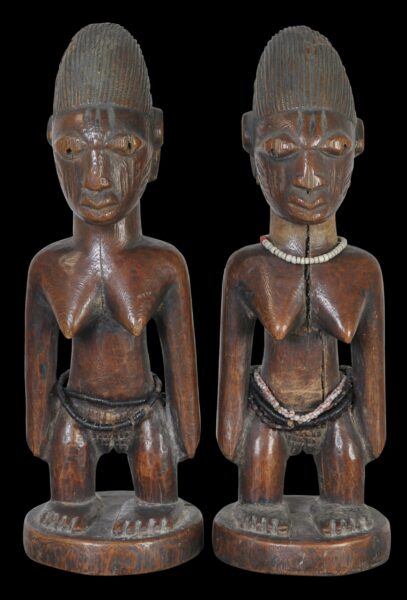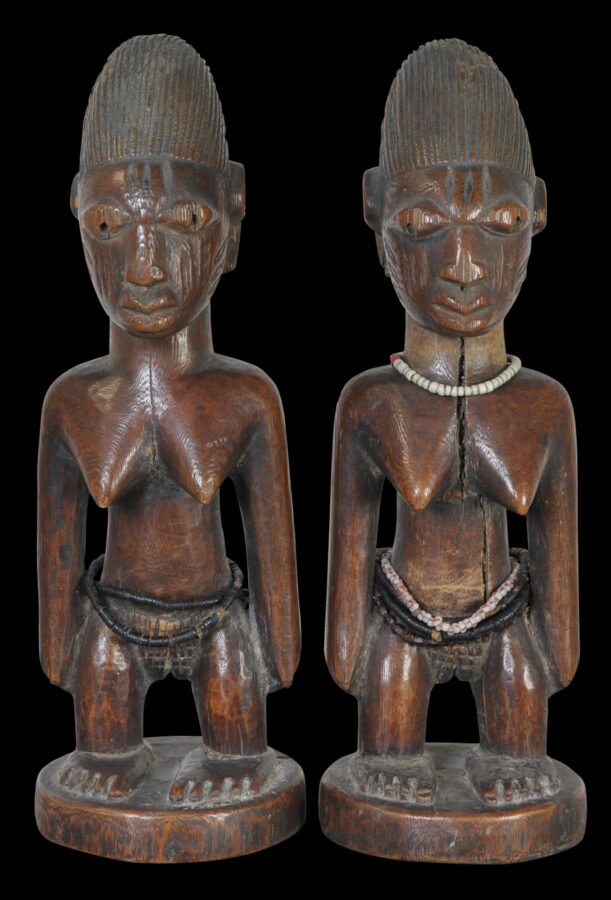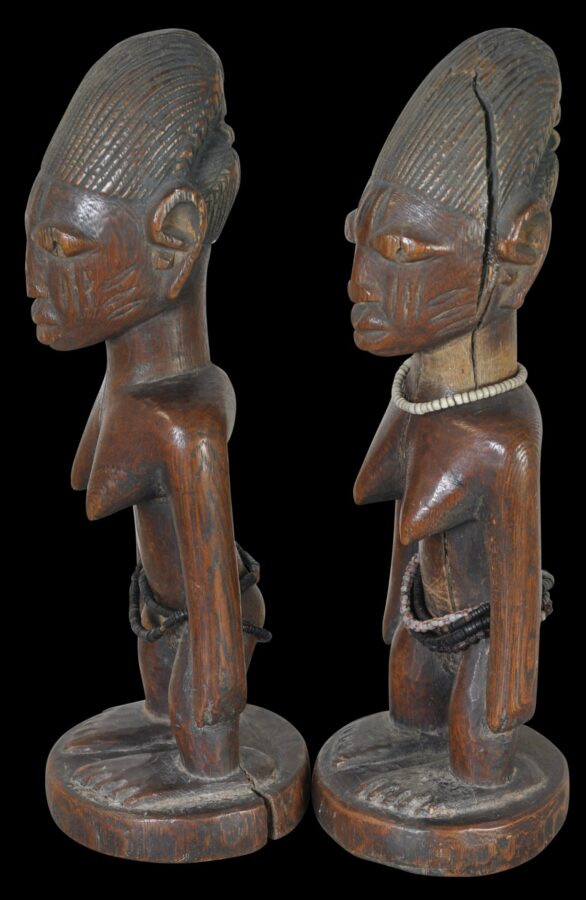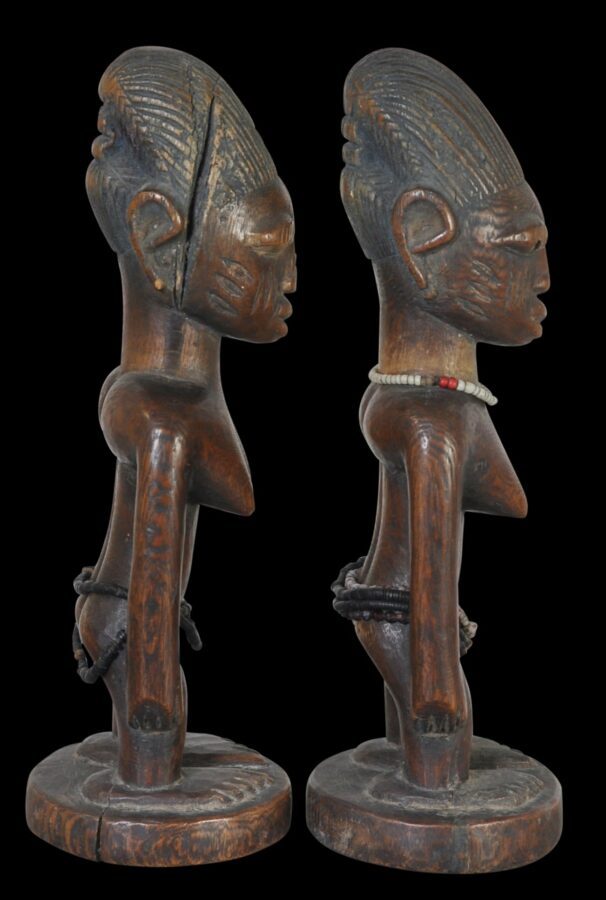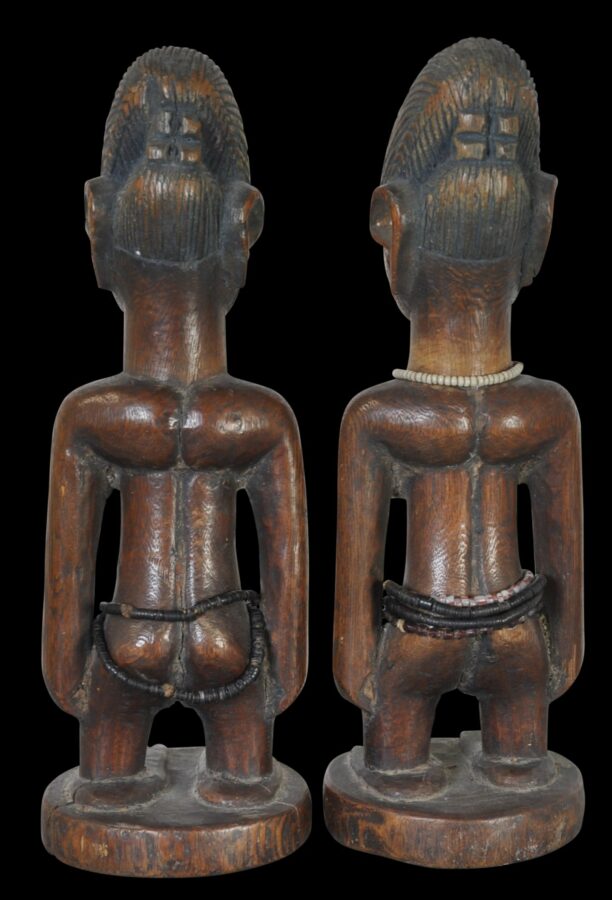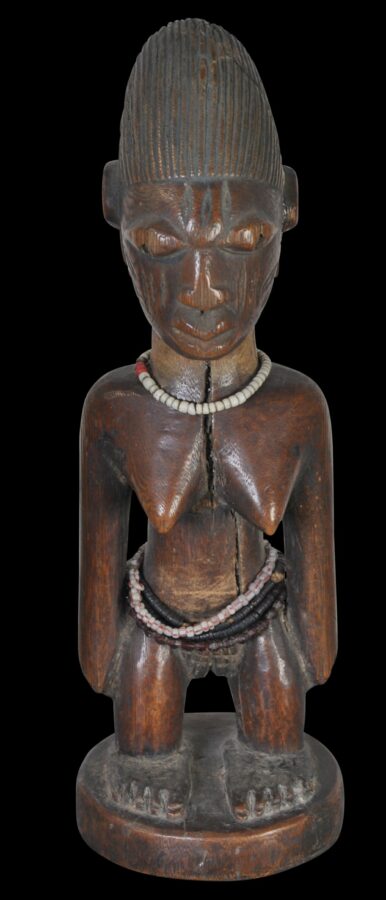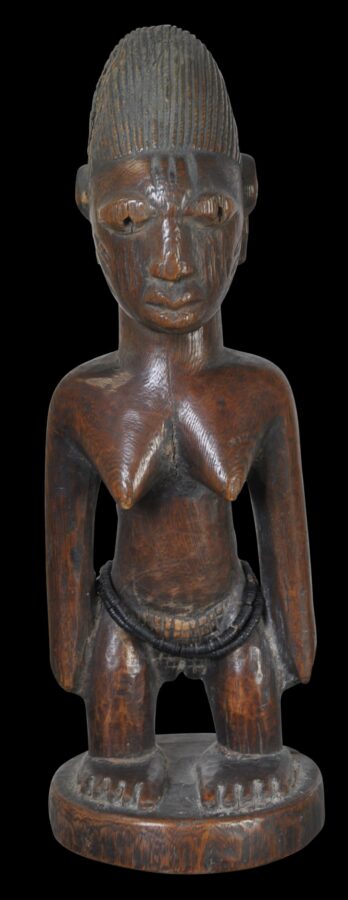Enquiry about object: 4805
Yoruba Pair of Ibeji Twin Figures
Yoruba People, Awori sub-group, Ado Odo Region, Nigeria 19th-early 20th century
height: 24.3cm, width: 8.2cm, depth: 8.1cm, combined weight: 473g
Provenance
private collection, UK; Adam Prout, UK.
This pair of female ere ibeji twins have good, lustrous patinas, with contours softened from handling. Their age is obvious. Also, they are a clear pair and are essentially identical.
Both stand with hands down their sides, legs apart, and with protruding breasts. Their beautifully rendered faces are characteristically long, with wide but sleepy almond-shaped eyes; flared nostrils; full broad and protruding lips; and strong ears carved towards the backs of the heads. The eyes are particularly bulging.
Both have large heads: the over-sized head is deliberate – the head is where the spirit resides. Among the Yoruba, the over-sized head is associated with one’s destiny, and can be a measure of one’s likely success or failure.
Interestingly, and this is characteristic of ibejis carved in the Ado Odo region, the bottom lip of each is carved with a central spilt or scar.
The other scarification markings are extensive. There are three vertical marks on the foreheads, three vertical marks down each cheek, and three marks running across part of each cheek at an angle.
The raised coiffure of each is helmet-like and on the reverse of each is an elaborate bow-like structure carved into the hair.
The feet of each are unusual – they are big, the heels are wide and protruding behind the figure, and the toes carved falling away on an angle rather than being flush with each other.
Each stands on a raised, tiered, round platform.
Both wear waistbands and one also has a necklace. These are of small glass trade beads and tiny coconut shell disks.
Each has an incised triangular patch of pubic hair.
Yoruba people have the highest dizygotic (non-identical) twinning rate in the world. The birth of twins amongst Yoruba women are four times more likely than anywhere else. Unfortunately, the mortality rate of the twins also was high. Ere Ibeji figures were carved as spiritual representations of the twins who died. These figures were commissioned from village carvers, who were also often highly trained priests (Babalawo). The images were carved as adults, rather than as the deceased infants. It is common in African sculpture that representations of children are made with adult-like qualities, including elaborate coiffures, scarifications on the face, fully developed breasts (on female figures), pubic hair and prominent genitalia. They were usually placed on a shrine dedicated to Elegba (a divine messenger deity) in the living area of the house and fed, bathed and dressed regularly. These figures were particularly special to the mother, who kept them close to her and caressed the figures in a loving manner, hence the wear that genuinely old examples exhibit.
The pair here have obvious age. Both have shrinkage-related splits to the heads. These are stable and quite typical.
References
Bacquart, J. B., The Tribal Arts of Africa, Thames & Hudson, 1998.
Fagg, W. and J. Pemberton, J., Yoruba: Sculpture of West Africa, Collins, 1982.
Polo, F., Encyclopedia of the Ibeji, Ibeji Art, 2008.
Rowland, A., H.J. Drewal, and J. Pemberton, Yoruba: Art and Aesthetics,Museum Rietberg, Zurich, 1991.


